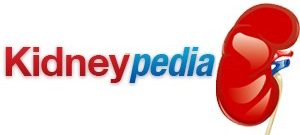Lithotripsy is a commonly-
Types
Lithotripsy comes in two types. The more common form is called extracorporeal shock wave lithotripsy (ESWL). The other form is laser lithotripsy. In both cases, the goal of lithotripsy is to fracture the kidney stone or renal calculus into smaller fragments so that the body can eliminate them naturally. ESWL is considered a non-
Extracorporeal Shock Wave Lithotripsy
In ESWL or sound-
An acoustic pulse is delivered repeatedly to the kidney stone. Successful treatment breaks the stone into small bits. Over the next few days, the stones pass into the urine and are removed from the body. Although this is the least invasive of all active kidney stone treatments, the success rate is somewhat less than for more invasive procedures, including laser lithotripsy.
Laser Lithotripsy
Lithotripsy that uses lasers rather than sound waves requires the insertion of a scope –
Risk Factors
Either type of lithotripsy may generate a certain amount of pain, especially after the procedure is over when, if it’s successful, a number of small kidney stones will be passed through the urinary tract. At this point you’re dealing with, in effect, multiple smaller kidney stones and pain management may be required. Other complications include damage to capillaries from ESWL leading to subcapsular hemorrhage and, in rare cases, renal failure. With laser lithotripsy, the main risk is from damage to the urinary tract from insertion and movement of the scope.
Percutaneous Lithotripsy
Another, more invasive procedure also classified as lithotripsy is percutaneous lithotripsy. Unlike either ESWL or laser lithotripsy, percutaneous lithotripsy requires making a surgical incision in your back. A tube is inserted into the kidney and a probe is inserted through the tube and used to physically break the kidney stone into fragments. Alternatively, the kidney stone may simply be surgically removed in the same procedure, in which case it’s called percutaneous lithotomy rather than lithotripsy. Obviously, this procedure is much more invasive than either ESWL or laser lithotripsy. It carries a risk of substantial kidney damage, and requires either general or regional anesthesia. Recovery from the procedure requires hospitalization for 2-
lithotripsy is higher than with less invasive forms of the procedure.
Alternatives
The majority of kidney stones don’t require any sort of aggressive treatment. Kidney stones can be very painful, however, and so at a minimum pain management with medications is usually required. Also, when kidney stones are diagnosed, monitoring is called for to make sure that the stone passes normally.
The most invasive form of kidney stone treatment is standard nephrolithotomy, also known as open surgery. This is recommended in cases where a kidney stone is too large to treat with either ESWL or laser lithotripsy, and positioned poorly to allow use of percutaneous lithotomy
or lithotripsy. A larger incision is made in the body and the kidney stone is removed by standard surgical procedure. Potential complications are as with any major surgical procedure: infection, damage to the kidneys from the surgery, severe bleeding, and complications from the anesthetic. A longer and more difficult recovery is also to be anticipated. For all these reasons, open surgery is used only when no other method is likely to achieve success.
